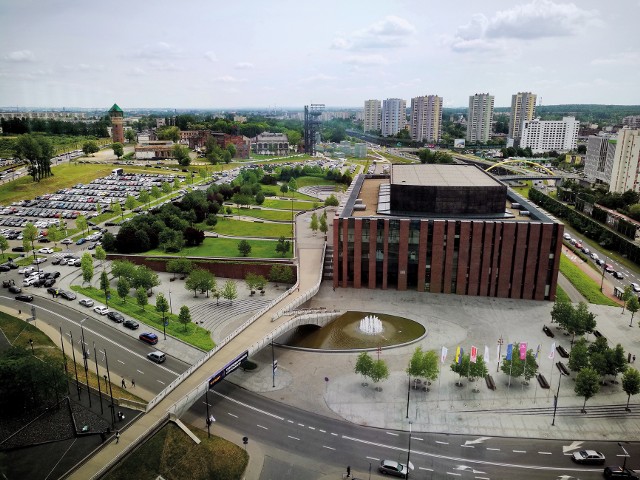We have prepared for you an unusual guidebook which will allow you to see another side of the city, and we hope that it’s going to change your mind. Welcome to Katowice. Enjoy successful debates and have fun.
Wujek Coal Mine
Wujek Coal Mine (in Polish: Kopalnia Wujek) is located in one of the districts of Katowice - Brynów. At first glance, it’s a coal mine like many others. However, it was here that in the early days of Martial law, which the authoritarian communist government introduced to intimidate Poles in 1981, 9 protesting miners were shot dead by police troops. Today it is a memorial site - one of the most important places in the post-war history of Poland and a sacred location for Upper Silesia. A massive concrete cross commemorates the victims of the massacre. The memorial was unveiled in 1991 by Lech Wałęsa, the President of the Republic of Poland at that time.
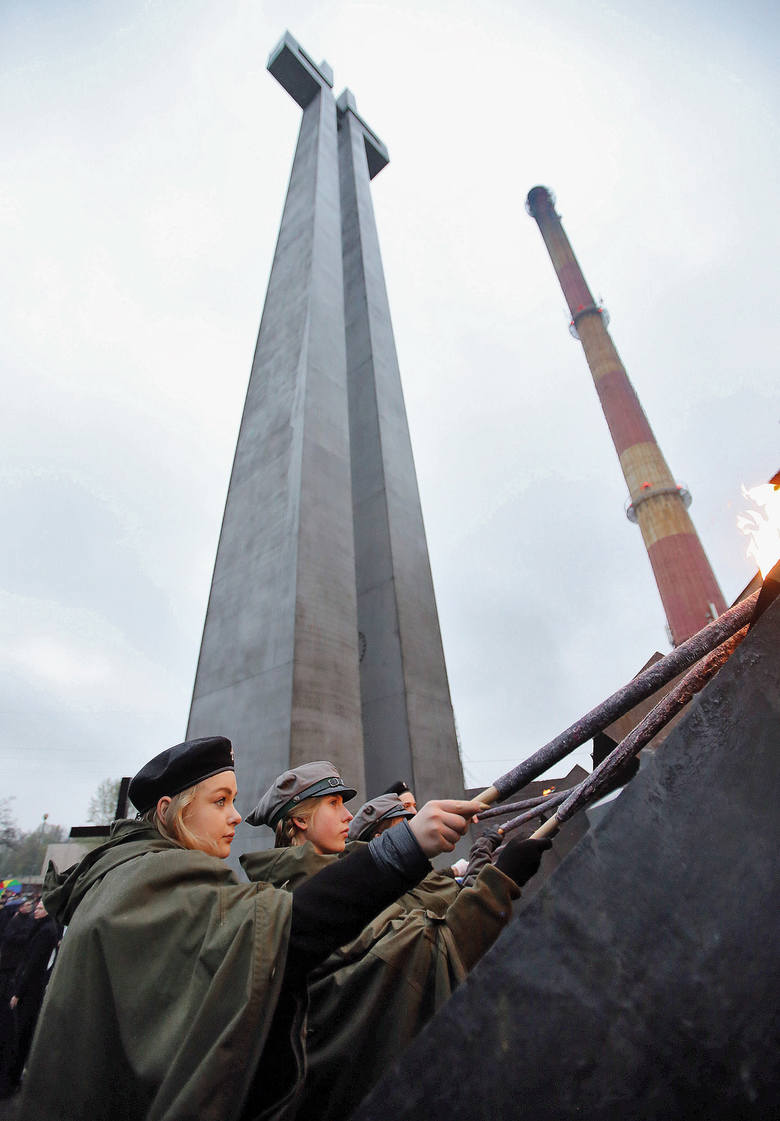
Wujek Coal Mine (in Polish: Kopalnia Wujek) is located in one of the districts of Katowice - Brynów. At first glance, it’s a coal mine like many others. However, it was here that in the early days of Martial law, which the authoritarian communist government introduced to intimidate Poles in 1981, 9 protesting miners were shot dead by police troops. Today it is a memorial site - one of the most important places in the post-war history of Poland and a sacred location for Upper Silesia. A massive concrete cross commemorates the victims of the massacre. The memorial was unveiled in 1991 by Lech Wałęsa, the President of the Republic of Poland at that time.
Wojciech Kilar and Francis Ford Coppola
You surely know the Oscar-winning “Dracula” directed by FF Coppola. It was right here in Katowice that the composer of the outstanding soundtrack to this movie lived for many years. Wojciech Kilar also wrote music for the films of the most significant Polish directors, including the likes of Andrzej Wajda, Krzysztof Zanussi, Krzysztof Kieślowski and Roman Polański, as well as many foreign directors. Wojciech Kilar, one of the most eminent Polish composers, a globally-renowned author of film music, died in 2013, but his memory is still alive today. The villa at Kościuszki street and the tomb in the cemetery at Sienkiewicza street are important for the admirers of the master’s outstanding talent. The square near the beautiful new seat of the Polish National Radio Symphony Orchestra (right next to COP 24) was named after Wojciech Kilar.
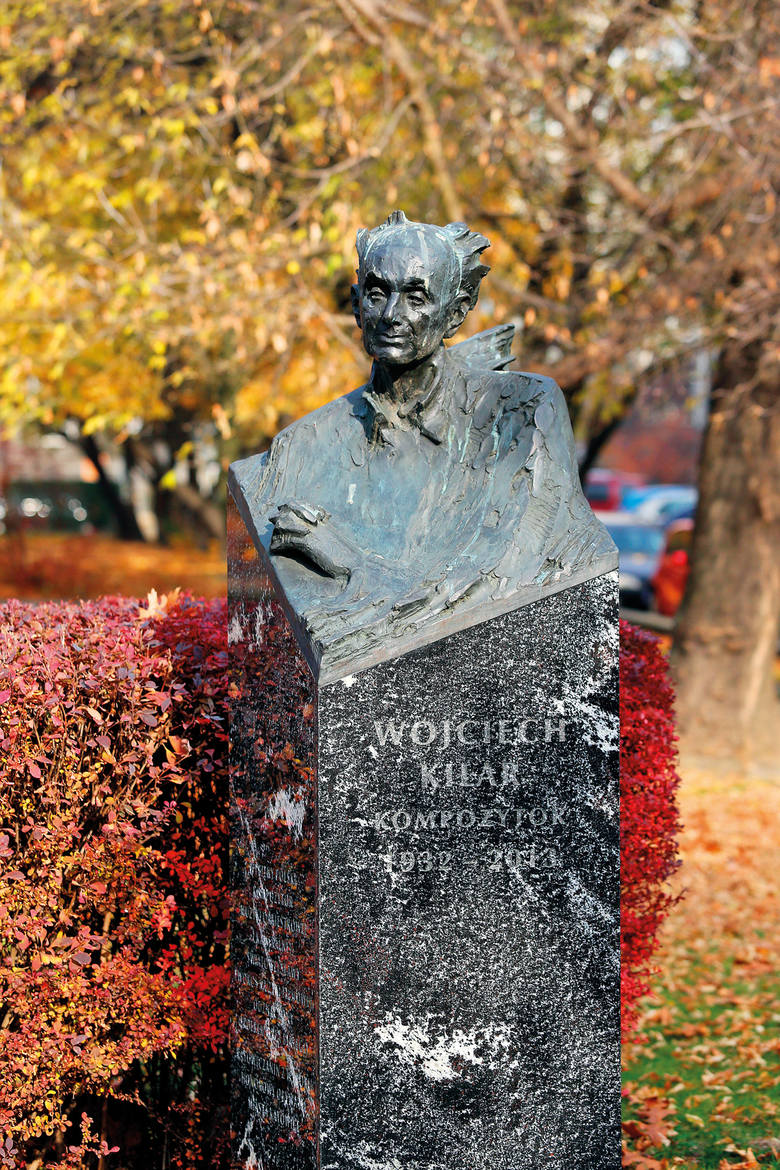
You surely know the Oscar-winning “Dracula” directed by FF Coppola. It was right here in Katowice that the composer of the outstanding soundtrack to this movie lived for many years. Wojciech Kilar also wrote music for the films of the most significant Polish directors, including the likes of Andrzej Wajda, Krzysztof Zanussi, Krzysztof Kieślowski and Roman Polański, as well as many foreign directors. Wojciech Kilar, one of the most eminent Polish composers, a globally-renowned author of film music, died in 2013, but his memory is still alive today. The villa at Kościuszki street and the tomb in the cemetery at Sienkiewicza street are important for the admirers of the master’s outstanding talent. The square near the beautiful new seat of the Polish National Radio Symphony Orchestra (right next to COP 24) was named after Wojciech Kilar.
An alternative guide to Katowice. What you also need to know...
Silesian language
Katowice is the capital of Upper Silesia - a region of Poland of historical and economical importance. The Upper Silesians have their own unique language, which is a mixture of Polish, Czech and German. Don’t be surprised to hear (in a hotel, restaurant or anywhere else) the following words that Google Translate does not recognise:
- - bana or banka - a tram
- - fliger – a plane
- - klamory - luggage
- - krupniok - a popular Silesian dish, a blood sausage similar to black pudding
- - rolada - a stuffed beef slice, another classic Silesian dish
- - blumy - flowers
- - badytuch - a shower towel
- - fajrant - end of day’s work or break at work ...
- ... and many, many other fascinating words ...
Wojciech Korfanty
In case you are wondering who the most important historical person for Katowice and Upper Silesia is, we do have the answer: Wojciech Korfanty. A member of German and Polish parliaments, the leader of Polish insurrections against German rule in Upper Silesia, who made it possible for this previously German land to become part of Poland after World War I. Today Katowice remembers Korfanty with a monument (on Plac Sejmu Śląskiego square, in the historic part of the city), and a mural commemorating him - on a tenement house at Dudy-Gracza street. Although Silesians regard Korfanty both as a successful politician and an efficient entrepreneur, he actually considered himself to be an ‘editor’ and always stated that this was his profession in personal files. In the first decades of 20th century, he published several journals important for Upper Silesia.
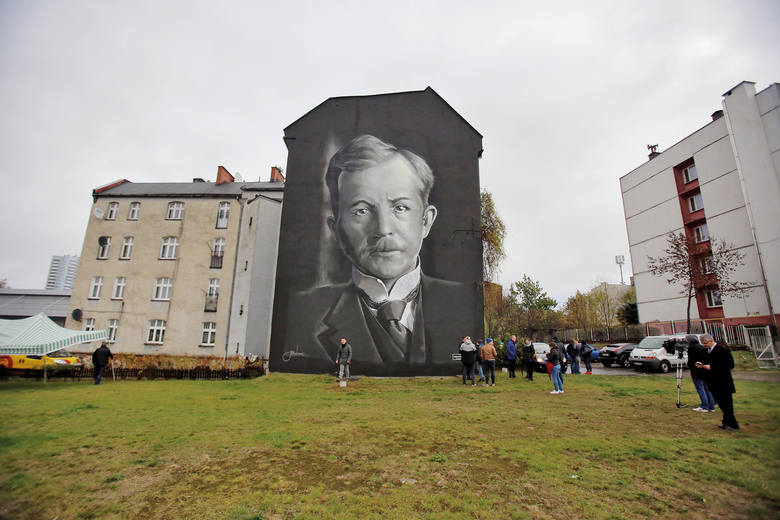
In case you are wondering who the most important historical person for Katowice and Upper Silesia is, we do have the answer: Wojciech Korfanty. A member of German and Polish parliaments, the leader of Polish insurrections against German rule in Upper Silesia, who made it possible for this previously German land to become part of Poland after World War I. Today Katowice remembers Korfanty with a monument (on Plac Sejmu Śląskiego square, in the historic part of the city), and a mural commemorating him - on a tenement house at Dudy-Gracza street. Although Silesians regard Korfanty both as a successful politician and an efficient entrepreneur, he actually considered himself to be an ‘editor’ and always stated that this was his profession in personal files. In the first decades of 20th century, he published several journals important for Upper Silesia.
Shops instead of a coal mine
Chorzowska 107. This is a classic example of the postindustrial transformation of Katowice. The place which now houses Silesia City Centre (the city’s main shopping and entertainment centre), was for many years a coal mine. It changed its name several times and the last one was “Gottwald” - to commemorate a Czechoslovakian prime minister Klement Gottwald. It was closed down in 1990s and the ground was sold. Nowadays, Silesians come here to do their shopping, but the high shaft and several old buildings, which host e.g. restaurants, are still there to remind us about the former coal mine.
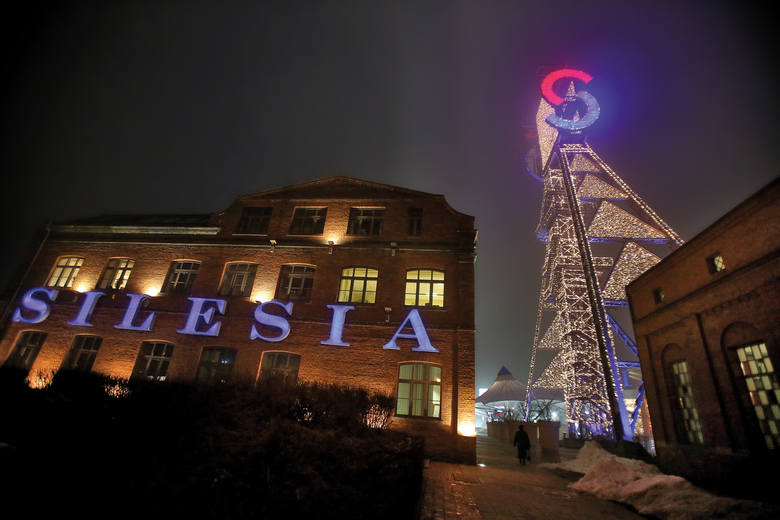
Chorzowska 107. This is a classic example of the postindustrial transformation of Katowice. The place which now houses Silesia City Centre (the city’s main shopping and entertainment centre), was for many years a coal mine. It changed its name several times and the last one was “Gottwald” - to commemorate a Czechoslovakian prime minister Klement Gottwald. It was closed down in 1990s and the ground was sold. Nowadays, Silesians come here to do their shopping, but the high shaft and several old buildings, which host e.g. restaurants, are still there to remind us about the former coal mine.
Local food.
Katowice is a specific city. It was here that a restaurant serving local cuisine, owned by the renowned restaurateur Magda Gessler, went bankrupt despite its location in the very centre. Traditional Silesian cuisine includes the sour rye soup called żur (in Poland soups are served as the first course rather than a starter), a stuffed beef slice called rolada with red cabbage and krupniok, a kind of sausage containing ... blood. It’s delicious and nutritious, but only for people with strong nerves. The same is true for flaki - tripe, a traditional Polish dish.
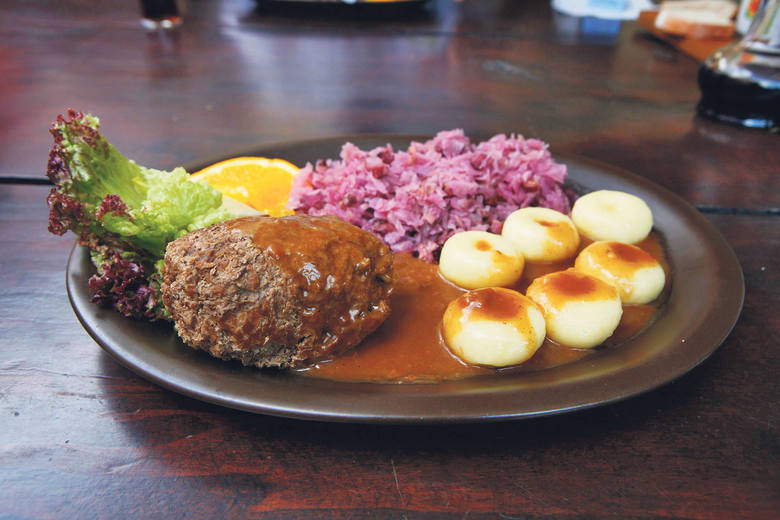
Katowice is a specific city. It was here that a restaurant serving local cuisine, owned by the renowned restaurateur Magda Gessler, went bankrupt despite its location in the very centre. Traditional Silesian cuisine includes the sour rye soup called żur (in Poland soups are served as the first course rather than a starter), a stuffed beef slice called rolada with red cabbage and krupniok, a kind of sausage containing ... blood. It’s delicious and nutritious, but only for people with strong nerves. The same is true for flaki - tripe, a traditional Polish dish.
Mariacka and night life
Mariacka street in Katowice resembles Pigneto in Rome: it’s not that beautiful, but the parties here are one of a kind. This is where you can drink Polish vodka or craft beer in one of numerous bars, eat a zapiekanka (a cut-in-half baguette topped with mushrooms and other ingredients, a legendary fast food dish from the communist times), an original Italian pizza or Japanese sushi. Mariacka never sleeps, not even in the winter. Here’s a piece of advice: do not try to drink a shot of vodka in every bar you encounter. It may turn out that you will never remember what happened that day, or you will try to forget it.

Mariacka street in Katowice resembles Pigneto in Rome: it’s not that beautiful, but the parties here are one of a kind. This is where you can drink Polish vodka or craft beer in one of numerous bars, eat a zapiekanka (a cut-in-half baguette topped with mushrooms and other ingredients, a legendary fast food dish from the communist times), an original Italian pizza or Japanese sushi. Mariacka never sleeps, not even in the winter. Here’s a piece of advice: do not try to drink a shot of vodka in every bar you encounter. It may turn out that you will never remember what happened that day, or you will try to forget it.
Spodek - Flying Saucer.
Spodek, a sports and cultural venue with the shape resembling a flying saucer, is for Katowice what Eiffel Tower is for Paris. It “landed” here in 1970s and continues to be the most characteristic building of the city. This is the building between the white pavilions where COP events are held. Taking a photo with Spodek in the background is a must, preferably from the congress centre terrace. Opposite Spodek, on the other side of the roundabout, there is Superjednostka, probably the largest block of flats you have ever seen: 187.5 metres wide with 800 flats for 3,000 people. Not easy to live in, though, as the lifts stop every third floor.

Spodek, a sports and cultural venue with the shape resembling a flying saucer, is for Katowice what Eiffel Tower is for Paris. It “landed” here in 1970s and continues to be the most characteristic building of the city. This is the building between the white pavilions where COP events are held. Taking a photo with Spodek in the background is a must, preferably from the congress centre terrace. Opposite Spodek, on the other side of the roundabout, there is Superjednostka, probably the largest block of flats you have ever seen: 187.5 metres wide with 800 flats for 3,000 people. Not easy to live in, though, as the lifts stop every third floor.
Silesian Stadium (Stadion Śląski) in Chorzów.
It has the status of a National Stadium. It was here that the Polish national football team beat England in 1973. The only time ever! Since then, the stadium has been referred to as the “Cauldron of Witches.” This nickname was given by English journalists who were impressed by the venue. The legendary stadium, freshly renovated, is located in one of the biggest in-city parks of Europe, larger than, for instance, New York’s Central Park. This is Silesian Park, which you can walk through or ride in a cable car called Elka.
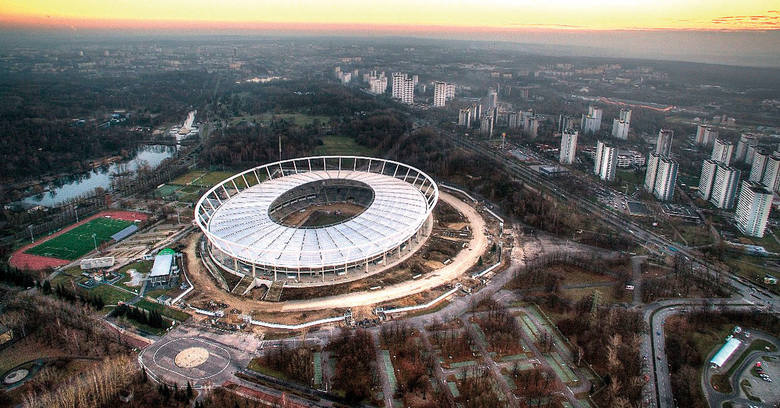
It has the status of a National Stadium. It was here that the Polish national football team beat England in 1973. The only time ever! Since then, the stadium has been referred to as the “Cauldron of Witches.” This nickname was given by English journalists who were impressed by the venue. The legendary stadium, freshly renovated, is located in one of the biggest in-city parks of Europe, larger than, for instance, New York’s Central Park. This is Silesian Park, which you can walk through or ride in a cable car called Elka.
Iron house.
Upper Silesia is a region which for many years relied on heavy industry: coal mining and steelworks. Steel was used not only in industry, but also to construct houses. All that almost a century ago! To see a house made of steel, you need to go to Rokitnica - a district of Zabrze located about 20 kilometres away from Katowice. Attention! Do not knock on the steel wall, however tempting it seems, as there are still people living inside and the sound is carried well.
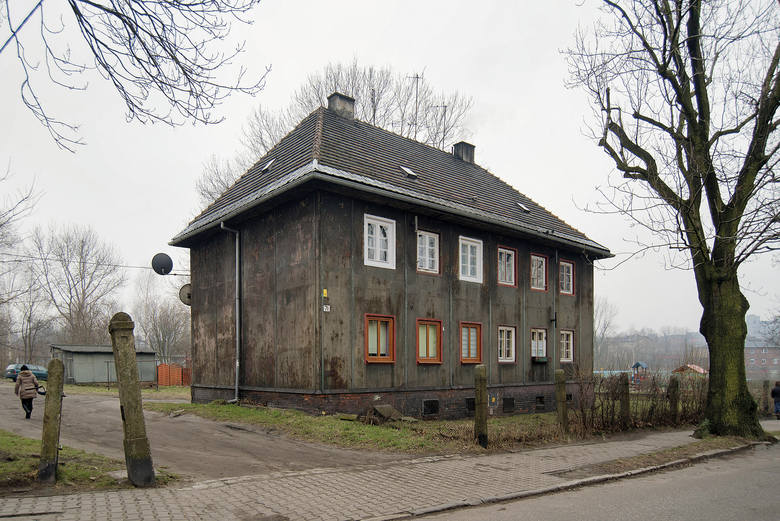
Upper Silesia is a region which for many years relied on heavy industry: coal mining and steelworks. Steel was used not only in industry, but also to construct houses. All that almost a century ago! To see a house made of steel, you need to go to Rokitnica - a district of Zabrze located about 20 kilometres away from Katowice. Attention! Do not knock on the steel wall, however tempting it seems, as there are still people living inside and the sound is carried well.
Lead-Silver-Zinc Mine.. UNESCO
Finally, if you want to see one more site to tell your friends about when you come back home, here’s the good news: UNESCO. In the town of Tarnowskie Góry, 35 kilometres away from Katowice, you will find Lead-Silver-Zinc Mine – inactive, but open for tourists. The tourist route allows seeing the entire underground mine with shafts, galleries and other elements of the water management system. Interestingly, at this time of the year it may be warmer underground than outside - 8-10°C (50°F). Moreover, there is no smog underground, but a spring of beauty and wisdom, which you can drink from without limits.

Finally, if you want to see one more site to tell your friends about when you come back home, here’s the good news: UNESCO. In the town of Tarnowskie Góry, 35 kilometres away from Katowice, you will find Lead-Silver-Zinc Mine – inactive, but open for tourists. The tourist route allows seeing the entire underground mine with shafts, galleries and other elements of the water management system. Interestingly, at this time of the year it may be warmer underground than outside - 8-10°C (50°F). Moreover, there is no smog underground, but a spring of beauty and wisdom, which you can drink from without limits.
Dołącz do nas na Facebooku!
Publikujemy najciekawsze artykuły, wydarzenia i konkursy. Jesteśmy tam gdzie nasi czytelnicy!
Dołącz do nas na X!
Codziennie informujemy o ciekawostkach i aktualnych wydarzeniach.
Kontakt z redakcją
Byłeś świadkiem ważnego zdarzenia? Widziałeś coś interesującego? Zrobiłeś ciekawe zdjęcie lub wideo?
